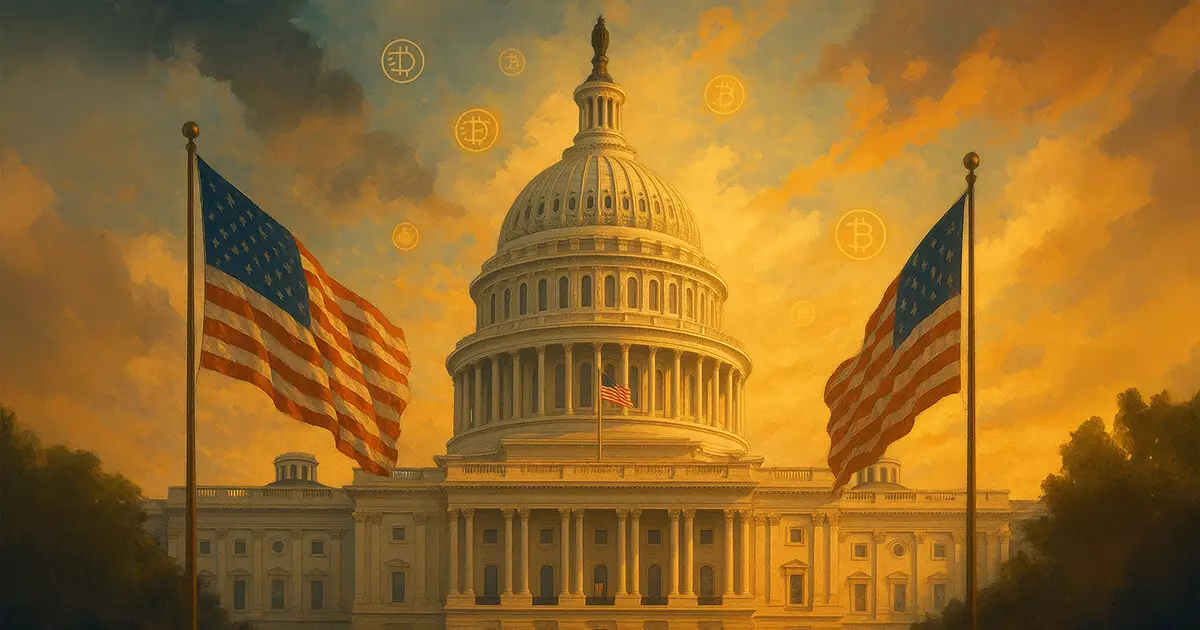The upcoming “Crypto Week” in the U.S. House of Representatives signals a decisive moment for American digital assets policy. While the legislative forefront appears to champion clarity and strategic national leadership, one must critically examine whether these developments ultimately serve the broader interests of innovation, economic growth, and individual freedoms. The proposed bills—the CLARITY Act, the GENIUS Act, and the Anti-CBDC Surveillance State Act—each carry profound implications, but their combined trajectory warrants suspicion about whether government oversight is growing too tight under the guise of regulation.
The CLARITY Act endeavors to resolve years of regulatory ambiguity that have crippled the crypto sector. Its strategic categorization of digital assets into securities, commodities, and stablecoins is a commendable attempt to bring order. Yet, the division of oversight between the SEC and CFTC risks creating a bureaucratic quagmire that could inadvertently favor established financial institutions over emerging innovators. By assigning Bitcoin to the CFTC’s domain while reserving securities regulation for the SEC, the bill aims for clarity—but it also entrenches bureaucratic turf wars that could stifle rapid technological development. The dual-track registration idea sounds promising but leaves room for subjective interpretation and potential regulatory overreach, ultimately curtailing entrepreneurs’ flexibility. Responsible innovation requires not just delineation but a flexible, predictable environment—one that these bills, at times, seem overly eager to control.
Meanwhile, the GENIUS Act’s focus on stablecoins suggests a strategic attempt to legitimize dollar-backed digital assets and integrate them into mainstream finance. While establishing clear rules for stablecoins may be necessary, the Act’s rigid regulatory framework risks creating barriers for smaller startups and innovators wary of navigating complex compliance requirements. The bipartisan support merits recognition but should not overshadow the danger of overregulation that could favor giant financial firms capable of shouldering heavy compliance burdens. Maintaining the dollar’s role as a global reserve currency is critical, but artificially engineered frameworks risk becoming a self-fulfilling prophecy of stagnation—if the U.S. market becomes overly bureaucratic, it could lose its competitive edge to more receptive and flexible jurisdictions.
The Anti-CBDC Surveillance State Act reflects legitimate concerns about privacy, but framing it as a ban on a federally issued digital currency illustrates a fundamental misunderstanding of modern monetary innovation. While privacy should be a priority, outright prohibition of a central bank digital currency (CBDC) could stunt America’s potential to innovate and stay ahead in a rapidly evolving global landscape. Moreover, such a stance risks placing American consumers at a disadvantage by refusing to explore digital currencies that, if properly designed, could enhance privacy without compromising security. The U.S. should instead aim to craft balanced regulations — ensuring privacy safeguards while remaining open to technological advances.
This legislative package, although presented as protecting consumers and maintaining U.S. dominance, appears to veer into a cautious conservatism that underestimates the transformative potential of blockchain and digital assets. The danger lies in regulatory overreach masquerading as protection, which could hem in innovation and favor entrenched interests. The reality is that the global digital economy is moving swiftly—driven by technological evolution and market demand. The U.S. risks losing its leadership position—not by lack of regulation but by overregulation that stifles the entrepreneurial spirit.
In this context, political and industry leaders should reassess whether their pursuit of control is aligned with fostering a healthy, innovative ecosystem. America’s strength lies not just in regulation but in its ability to balance oversight with freedom. Imposing restrictions for the sake of security and consumer confidence can easily morph into constraints that hinder growth, especially if bureaucratic interests dominate the conversation. If the goal is genuine leadership, policymakers must be willing to embrace a regulatory environment that encourages innovation, preserves individual liberties, and adapts swiftly to technological change—without the heavy-handed approach that these bills risk embodying.

